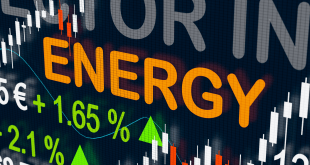The first half of November 2025 offered investors a striking contrast: one week defined by panic and heavy losses, the next by cautious recovery and sectoral rotation. Together, they tell a story of a market wrestling with the promise—and the peril—of artificial intelligence.
Week One: The AI Sell-Off
In the opening days of November, Wall Street was shaken by a brutal correction. Tech stocks, particularly those tied to artificial intelligence, shed more than $800 billion in market value. Giants like Nvidia and Microsoft bore the brunt, with Nvidia alone losing over $350 billion. The Nasdaq Composite fell 3%, its worst weekly performance since April, while the S&P 500 dropped 1.6%.
The sell-off was fueled by mounting fears that AI valuations had run too far, too fast. Analysts warned of a bubble forming, while investors fretted over ballooning capital expenditures—tech firms had already poured more than $112 billion into AI infrastructure this year. The mood was unmistakably defensive: traders pulled money out of high-growth names and parked it in safer havens.
Week Two: Rotation and Resilience
Then came the week beginning Monday, November 10. Markets staged a rebound, driven by optimism that Washington was moving closer to ending a government shutdown. The Nasdaq surged 2.3% that day, the S&P 500 climbed 1.5%, and the Dow Jones Industrial Average added 0.8%.
By Tuesday, the divergence was clear. The Dow leapt 559 points (+1.18%) to a record 47,927.96, powered by healthcare heavyweights like Merck, Amgen, and Johnson & Johnson. The S&P 500 edged higher to 6,846.61, while the Nasdaq slipped 0.25% to 23,468.30, weighed down by continued selling in AI-linked stocks such as CoreWeave.
Investors were rotating aggressively: out of richly valued tech and into defensive sectors. Tesla and Apple managed modest gains, but the broader AI complex remained under pressure. The message was unmistakable—Wall Street was no longer willing to pay any price for growth.
The Investor Mood
– Cautious optimism: Relief over political progress in Washington gave markets breathing room.
– Sector rotation: Defensive plays in healthcare and industry outperformed, while AI valuations were scrutinized.
– Lingering anxiety: Despite the rebound, traders remained wary that the AI sell-off might mark the start of a longer correction.
The Bigger Picture
The two weeks of November illustrate the tension at the heart of today’s market. Artificial intelligence remains the most powerful growth story in a generation, but its meteoric rise has left investors questioning sustainability. The sharp losses of early November and the uneven recovery that followed suggest that Wall Street is entering a new phase—one where enthusiasm for AI is tempered by hard questions about cost, competition, and long-term profitability.

 Noor Trends News, Technical Analysis, Educational Tools and Recommendations
Noor Trends News, Technical Analysis, Educational Tools and Recommendations




